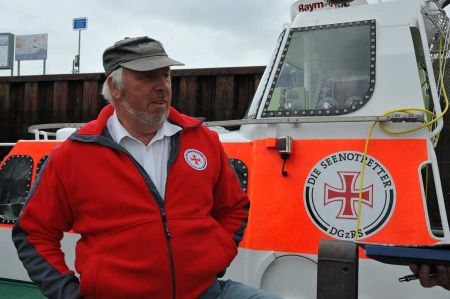Coastal sea rescue - 150 years service to shipwrecked people
- Written by Portal Editor
After visiting Lütetsburg, high in the north of Germany, we also came to the port of Horumersiel, an expanding tourist resort on the North Sea, which brought us together with Mr. Günther Ihnken, the foreman of the Baltrum lifeboat.
An insightful conversation on the pier and on board the Baltrum lifeboat about the history of sea rescue and in particular the Horumersiel / Schillig station was to follow. It was not without pride that Günther Ihnken announced the upcoming birthday of the German Society for the Rescue of Shipwrecked People (DGzRS) on May 29, 2015, which was preceded by the islanders' first joint mission for sea rescue on Spiekeroog.
We arrived at the roadstead at 11:30 noon
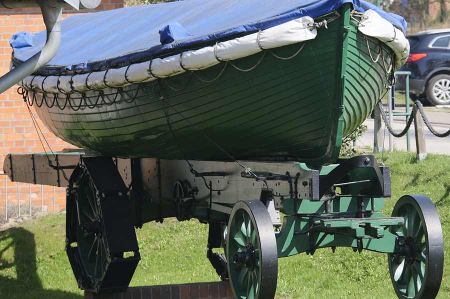 When on September 7, 1864, when the “Gagnerie” ran aground off Spiekeroog, almost all the island's residents lent a hand to bring the lifeboat purchased by the first regional association to rescue shipwrecked people into the water, one of the ideas of sea rescue was born: together to act on persons in distress:
When on September 7, 1864, when the “Gagnerie” ran aground off Spiekeroog, almost all the island's residents lent a hand to bring the lifeboat purchased by the first regional association to rescue shipwrecked people into the water, one of the ideas of sea rescue was born: together to act on persons in distress:
“As the horses were still in the pasture and had been waiting for a few minutes, the islanders were asked to pull the transport wagon with the new lifeboat to the beach. This difficult and, as it seemed at first, almost impossible work was undertaken with great willingness. Shortly before 9 o'clock the boat was afloat and, in addition to the foreman and the boatswain, six of our strongest men quickly jumped in. There was a very strong wind blowing from the north-west and the sea was high, so extreme caution had to be used to prevent the boat from capsizing. We rowed towards the ship with great effort.”
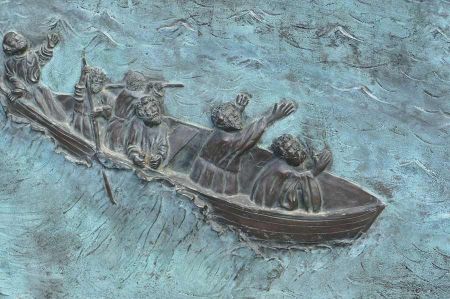 “We saw a dark object and rowed with all our might towards the supposed boat. We soon realized it was just a raft. We could distinguish five men on it, some lying and some sitting.
“We saw a dark object and rowed with all our might towards the supposed boat. We soon realized it was just a raft. We could distinguish five men on it, some lying and some sitting.
They waved for help. Now the enthusiasm of our team doubled. Danger and death threatened every minute. Fortunately, we soon reached them and immediately threw the throw line to them, which they grabbed.
Then we pulled the raft to the side of the boat.
After the appointment had been made, at a given signal, we each grabbed one of the five castaways with a quick, strong grip and threw them into our boat.
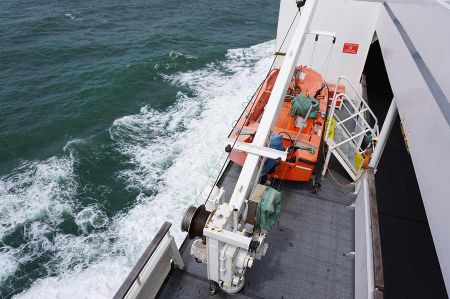 “The first thing the rescued people, whom we recognized as French, did was kiss our hands. Then they asked us for 'du pain', and they were gladly given the little dry bread that we still had in our pockets, which noticeably refreshed and strengthened the exhausted people, who, as it later turned out, had not eaten since midnight .”
“The first thing the rescued people, whom we recognized as French, did was kiss our hands. Then they asked us for 'du pain', and they were gladly given the little dry bread that we still had in our pockets, which noticeably refreshed and strengthened the exhausted people, who, as it later turned out, had not eaten since midnight .”
“At 11:30 a.m. we arrived at the roadstead and carried the shipwrecked people ashore. As they set foot on solid ground, everyone fell to their knees and the captain said a prayer of thanks, which was often interrupted by the tears and sobs of the others.”
This impressive report by the Spiekerooger sea rescuers from September 7, 1864 was another milestone in the history of selfless sea rescue, because just nine months later, on May 29, 1865, the German Society for the Rescue of Shipwrecked Persons (DGzRS) was founded as a unified, independent organization for all German coasts founded.
Beach law often stood in the way of sea rescue
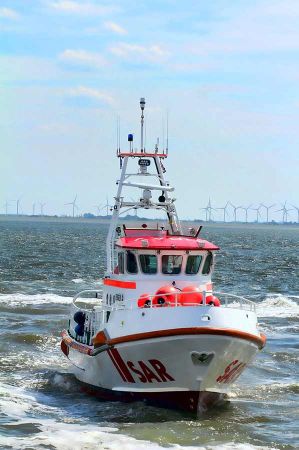 In the middle of the 19th century, around 50 ships had accidents every year off the German North Sea islands.
In the middle of the 19th century, around 50 ships had accidents every year off the German North Sea islands.
A lack of equipment and the current beach law often prevented rescue operations. Moved by such catastrophes, calls were made to form a national rescue organization.
Beach law regulated the legal relationships on flotsam and shipwreck. Flotsam includes individual goods that are washed ashore as well as stranded ships, their remains (wrecks) and the personal property of the crew.
In Europe, corresponding customs and legal norms have been handed down from pagan times.
It was only in the Middle Ages that church and state norms gradually adapted them to "Christian" requirements, initially varying regionally.
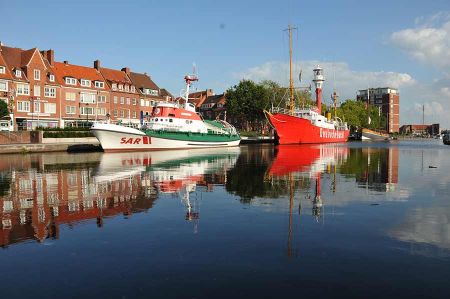 According to the beach law that came down from pagan and Roman times, coastal residents were allowed to use the adjacent beach in every way. This also included the appropriation of the flotsam and jetsam. Emperor Hadrian and Emperor Constantine apparently saw reason enough to pass laws against attacks by the state authorities. According to beach law, the flotsam and jetsam only fell to the finder if there were no survivors, which the finders sometimes “took care of themselves”. In such cases, beach law has become beach robbery. The coastal residents, often poor fishermen and small farmers, saw the flotsam and jetsam as an additional source of income and supply. It happened that ships were deliberately misguided; this happened, for example, by moving beacons. Up until the 19th century, this happened on almost all European coasts, including the Isles of Scilly, Rügen and Amrum.
According to the beach law that came down from pagan and Roman times, coastal residents were allowed to use the adjacent beach in every way. This also included the appropriation of the flotsam and jetsam. Emperor Hadrian and Emperor Constantine apparently saw reason enough to pass laws against attacks by the state authorities. According to beach law, the flotsam and jetsam only fell to the finder if there were no survivors, which the finders sometimes “took care of themselves”. In such cases, beach law has become beach robbery. The coastal residents, often poor fishermen and small farmers, saw the flotsam and jetsam as an additional source of income and supply. It happened that ships were deliberately misguided; this happened, for example, by moving beacons. Up until the 19th century, this happened on almost all European coasts, including the Isles of Scilly, Rügen and Amrum.
For the German Reich, in 1874, providing assistance in the event of a stranding, securing the flotsam, collecting data and reporting to the authorities was handed over to the beach authorities, to whom beach bailiffs were subordinate, through the stranding regulations. Accordingly, the flotsam was exempt from import duty. It was to be handed over to the person entitled to receive it against payment of the salvage costs.
The German Society for the Rescue of Shipwrecked Persons (DGzRS)
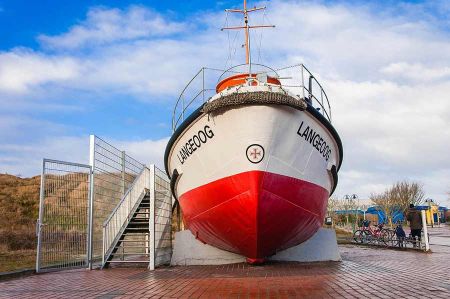 One of the most terrible accidents was the sinking of the Johanne off Spiekeroog in 1854, which cost the lives of 84 emigrants. In November 1860, the islanders on Borkum had to watch idly from the beach as the brig “Alliance” was smashed by the surf. The sailors desperately calling for help had lost their lives.
One of the most terrible accidents was the sinking of the Johanne off Spiekeroog in 1854, which cost the lives of 84 emigrants. In November 1860, the islanders on Borkum had to watch idly from the beach as the brig “Alliance” was smashed by the surf. The sailors desperately calling for help had lost their lives.
The first German rescue station was founded in 1802 in Memel, today's Klaipėda. The commercial corporation donated a lifeboat manned by a pilot. For the first time in Germany in 1827, an attempt was made to use cannons to shoot recovery lines to stranded ships in the shallow coastal waters near Memel. In 1839 the private establishment came under state administration.
But it was not until 1861 that rescue organizations were founded independently of one another in Emden, Bremerhaven and Hamburg. The first rescue stations were set up on Juist and Langeoog. Within the next four years, an almost incomprehensible change took place. The first calls for the establishment of rescue stations appeared in the daily newspapers. Community spirit and willingness to help prevailed against centuries-old beach laws and overcame the despairing powerlessness of the individual.
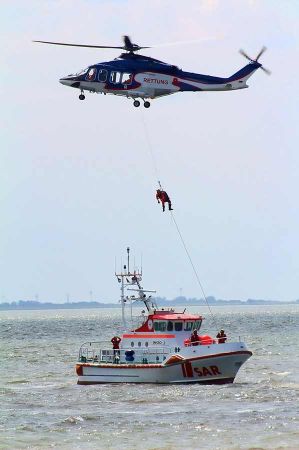 The equipment at the rescue stations initially consisted of open rowing lifeboats (RRB) and cork life jackets, later simple rocket devices with trouser buoys were added. The first motor lifeboats appeared in 1911, but they were initially very unreliable.
The equipment at the rescue stations initially consisted of open rowing lifeboats (RRB) and cork life jackets, later simple rocket devices with trouser buoys were added. The first motor lifeboats appeared in 1911, but they were initially very unreliable.
Only with the development of compact and robust diesel engines did the switch to covered motorboats take place after the First World War, which from 1955 were referred to as coastal rescue boats (KR) or ships (KRS).
Rescue technology has developed many times since the founding days of the DGzRS. The simple rowing lifeboats of yesteryear have become modern sea rescue cruisers and sea rescue boats.
However, one thing has not changed: what has remained is the voluntary willingness of sea rescuers to carry out their selfless and dangerous missions - around the clock, in all weathers.
Dramatic use of the “Vegesack” in Horumersiel 100 years ago.
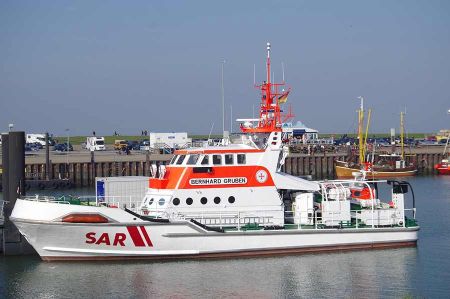 On December 3, 1909, the lifeboat "Vegesack" set out to rescue shipwrecked people. During a storm, a Dutch tjalk had sent out distress signals. For two days, the crew of the rowing lifeboat “Vegesack” under foreman Heinrich Tiarks tried to rescue people from distress in the North Sea. But the storm was too powerful: six shipwrecked people and a rescue man died. The operation went down in the annals as the “Death Voyage of the Vegesack”.
On December 3, 1909, the lifeboat "Vegesack" set out to rescue shipwrecked people. During a storm, a Dutch tjalk had sent out distress signals. For two days, the crew of the rowing lifeboat “Vegesack” under foreman Heinrich Tiarks tried to rescue people from distress in the North Sea. But the storm was too powerful: six shipwrecked people and a rescue man died. The operation went down in the annals as the “Death Voyage of the Vegesack”.
The Dutch tjalk “Ora et labora”, which was anchored off Schillig when the storm picked up on December 2nd, leaked during the night and ran aground. Shortly after 11 a.m. the captain raised the distress flag. The men of the “Vegesack” prepared their boat to help.
But the Dutch didn't want to leave their ship. The rescue men helped with draining and pumping the water out of the ship. The rescue of the Tjalk seems to be successful when the ironclad “Kurfürst Friedrich Wilhelm” takes the “Ora et labora” in tow.
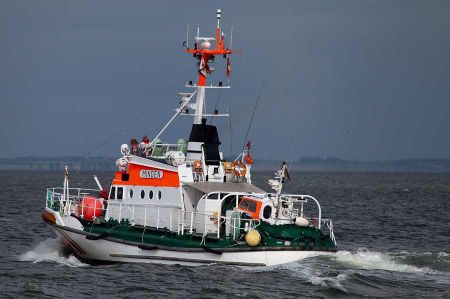 But things turn out completely differently: the raging storm throws the Tjalk around in the warship's fairway and the towing connection finally breaks.
But things turn out completely differently: the raging storm throws the Tjalk around in the warship's fairway and the towing connection finally breaks.
The “Elector Friedrich Wilhelm” can no longer help.
Due to the manoeuvres and the storm, the warship has been moved far out of the fairway towards Mellum; the danger of running aground on Mellum Reef is too great.
Now the Dutch have to leave their ship; the Horumersiel rescue men want to take them to safe land. On the way, the “Vegesack” picks up two more shipwrecked people: The tjalk “Ettina” from Westrhauderfehn with clinker for Wangerooge sprung a leak on the Jade and sank.
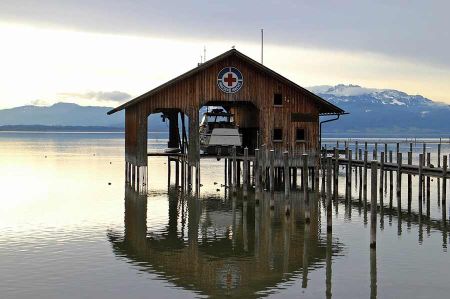 It is now the darkest night and the storm has become a hurricane. The “Vegesack” is cruising between Mellum and Minsener Oldeoog when steep, rising lakes hit the open boat with full force: the “Vegesack” is unable to manoeuvre. Everyone is still alive, but the cold and exhaustion sap their strength and claim fatalities: first the Dutch captain's wife and her small child, then the skipper, next is the Frisian captain of the "Ettina", his best man and the youngest of the Dutchmen follow.
It is now the darkest night and the storm has become a hurricane. The “Vegesack” is cruising between Mellum and Minsener Oldeoog when steep, rising lakes hit the open boat with full force: the “Vegesack” is unable to manoeuvre. Everyone is still alive, but the cold and exhaustion sap their strength and claim fatalities: first the Dutch captain's wife and her small child, then the skipper, next is the Frisian captain of the "Ettina", his best man and the youngest of the Dutchmen follow.
The rescue men struggle to reach the land where they can save them - the low tide threatens to drag them out to sea. At 2 a.m., with the last of their strength, they reach the Minsener Oldeoog residential beacon. Rescuer Heinrich Behrens dies there of cold and exhaustion. Of the shipwrecked people, only the helmsman of the “Ora et labora” is still alive.
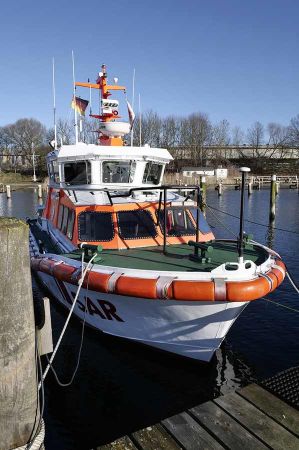 The reports from foreman Günther Ihnken, who then points out the modern Baltrum lifeboat, which is considered unsinkable, leave a deep impression of the hardships and dangers that the sea rescuers once exposed themselves to. 215 HP, electronic nautical charts and a completely sealed cabin are the most important factors for your own safety in sea rescue today. In addition to frequent control trips, it is above all the exercises that are held weekly that ultimately ensure the rescuers' survival during operations. In an emergency, three crew members go out to sea; boat licenses and radio licenses are just as necessary as the first aid certificate, which has to be repeated every two years.
The reports from foreman Günther Ihnken, who then points out the modern Baltrum lifeboat, which is considered unsinkable, leave a deep impression of the hardships and dangers that the sea rescuers once exposed themselves to. 215 HP, electronic nautical charts and a completely sealed cabin are the most important factors for your own safety in sea rescue today. In addition to frequent control trips, it is above all the exercises that are held weekly that ultimately ensure the rescuers' survival during operations. In an emergency, three crew members go out to sea; boat licenses and radio licenses are just as necessary as the first aid certificate, which has to be repeated every two years.
For those interested, there is an exhibition in the Horumersiel sea rescue station, which has been put together by the Historical Sea Rescue Association. “The men often risked their lives,” said Wieland Rosenboom. He and his club colleagues restored the rowing lifeboat “August Grassow” in two and a half years of work. The boat is of the same type as the “Vegesack”.
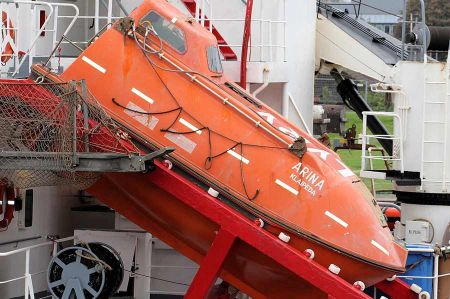 On May 29, 2015, the DGzRS celebrates its 150th birthday. For this purpose, the christening of a new sea rescue boat is planned in Bremen. On May 30, 2015, the first 28-meter rescue cruiser with a daughter boat will be named in Bremerhaven. There, the conference and congress of the international association of sea rescue services with Open Ship will join rescue units from many countries.
On May 29, 2015, the DGzRS celebrates its 150th birthday. For this purpose, the christening of a new sea rescue boat is planned in Bremen. On May 30, 2015, the first 28-meter rescue cruiser with a daughter boat will be named in Bremerhaven. There, the conference and congress of the international association of sea rescue services with Open Ship will join rescue units from many countries.
The DGzRS, founded in 1865, is responsible for the maritime search and rescue service in the German areas of the North and Baltic Seas. Its 180 permanent and more than 800 volunteer sea rescuers and 60 rescue units carry out more than 2,000 missions on the North and Baltic Seas every year, coordinated by the DGzRS Bremen Sea Emergency Command. The entire work of the sea rescuers is still financed exclusively through voluntary donations.
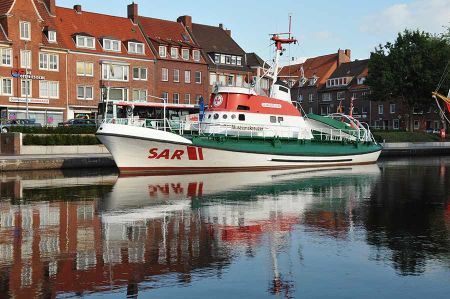 With the commissioning of the rescue cruiser Hermann Apelt in 1955, a new, groundbreaking era began in the construction of modern, versatile rescue cruisers with engine outputs of over 1,000 hp. A total of 37 rescue cruisers were put into service by 2011.
With the commissioning of the rescue cruiser Hermann Apelt in 1955, a new, groundbreaking era began in the construction of modern, versatile rescue cruisers with engine outputs of over 1,000 hp. A total of 37 rescue cruisers were put into service by 2011.
In 2012, the crews of the 20 rescue cruisers and 40 sea rescue boats in the North and Baltic Seas rescued 60 people from distress at sea, rescued 1,075 people from imminent danger, transported sick or injured people from seagoing vessels, islands or halls to the mainland 396 times, 72 ships and Saved boats from total loss, provided 1,017 assistance services for all types of watercraft and completed 492 mission attempts and safety trips. In the overall balance between the company's founding in 1865 and the end of 2012, 80,198 people were rescued from distress at sea or rescued from life-threatening situations.
Please read as well:
Klootshooting - North German leisure sport older than Boßeln!
Omis - adrenaline fun in a spectacular canyon landscape
https://www.alaturka.info/en/germany/lower-saxony/6275-coastal-sea-rescue-150-years-service-to-shipwrecked-people#sigProId37416deced
